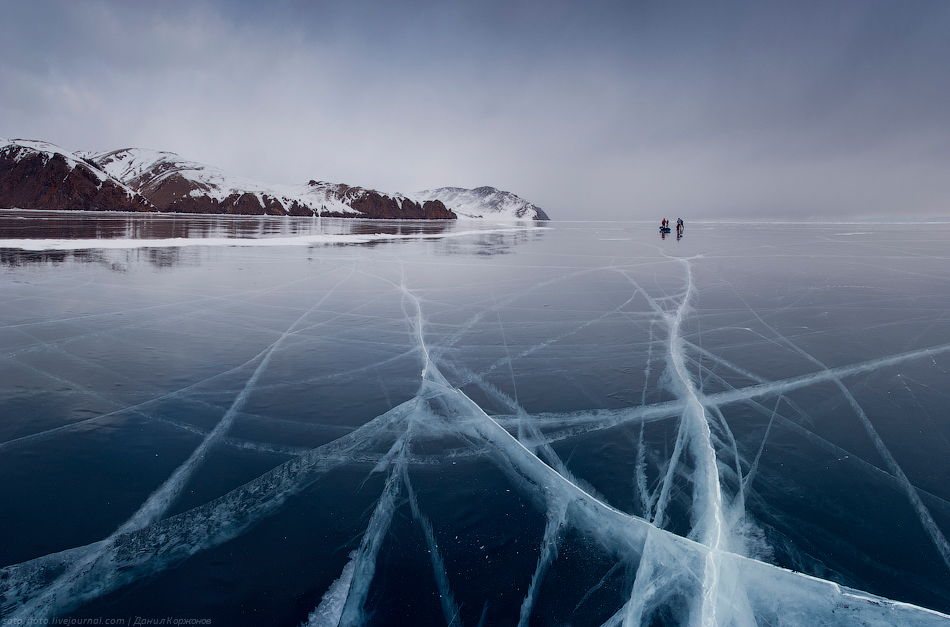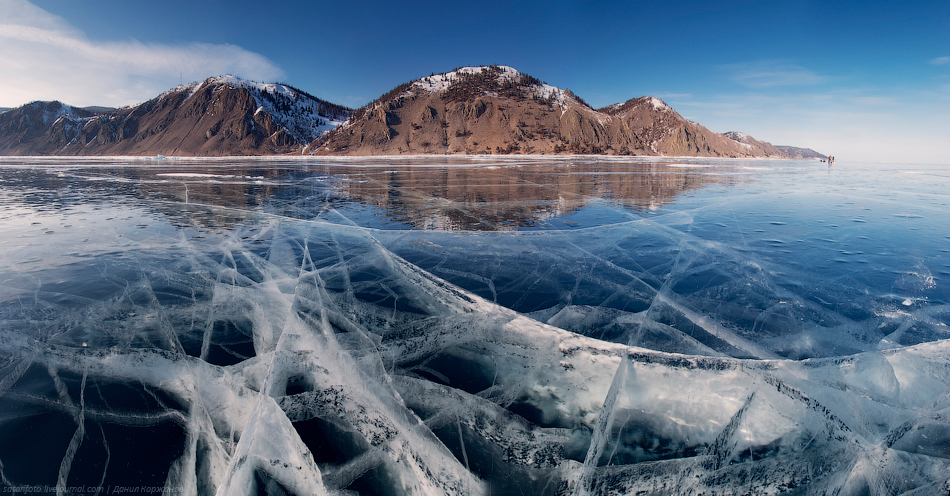

For almost five months a year, Lake Baikal is covered with ice. Perhaps because it's so deep, it starts freezing only in January, long after the Siberian frosts become intense. It usually thaws in May. At its peak, the ice is between 1 and 2 meters thick. Big cracks can be 10 to 30 kilometers long!
Lake Baikal is the world's largest freshwater lake. It contains roughly 20% of the world's unfrozen surface fresh water! It's 1600 meters deep — that's almost a mile! — and it's 640 kilometers long. It's over 30,000 square kilometers in area. It holds over 24,000 cubic kilometers of water.
Lake Baikal is also the oldest freshwater lake — about 25 million years old. Most lakes don't last very long. For example, the Great Lakes between Canada and the US started forming only 10,000 years ago, with the retreat of ice at the end of the last glacial period. I bet they've come and gone many times! But 25 million years goes back into the Oligocene, before the glacial cycles we're used to. Lake Baikal is in a rift valley, created by the Baikal Rift Zone. So, the whole lake is itself a kind of crack, that even now is expanding at 2 centimeters per year.
These are two of many beautiful images of Lake Baikal, which I found on a Russian website that no longer exists.

© 2013 John Baez
baez@math.removethis.ucr.andthis.edu